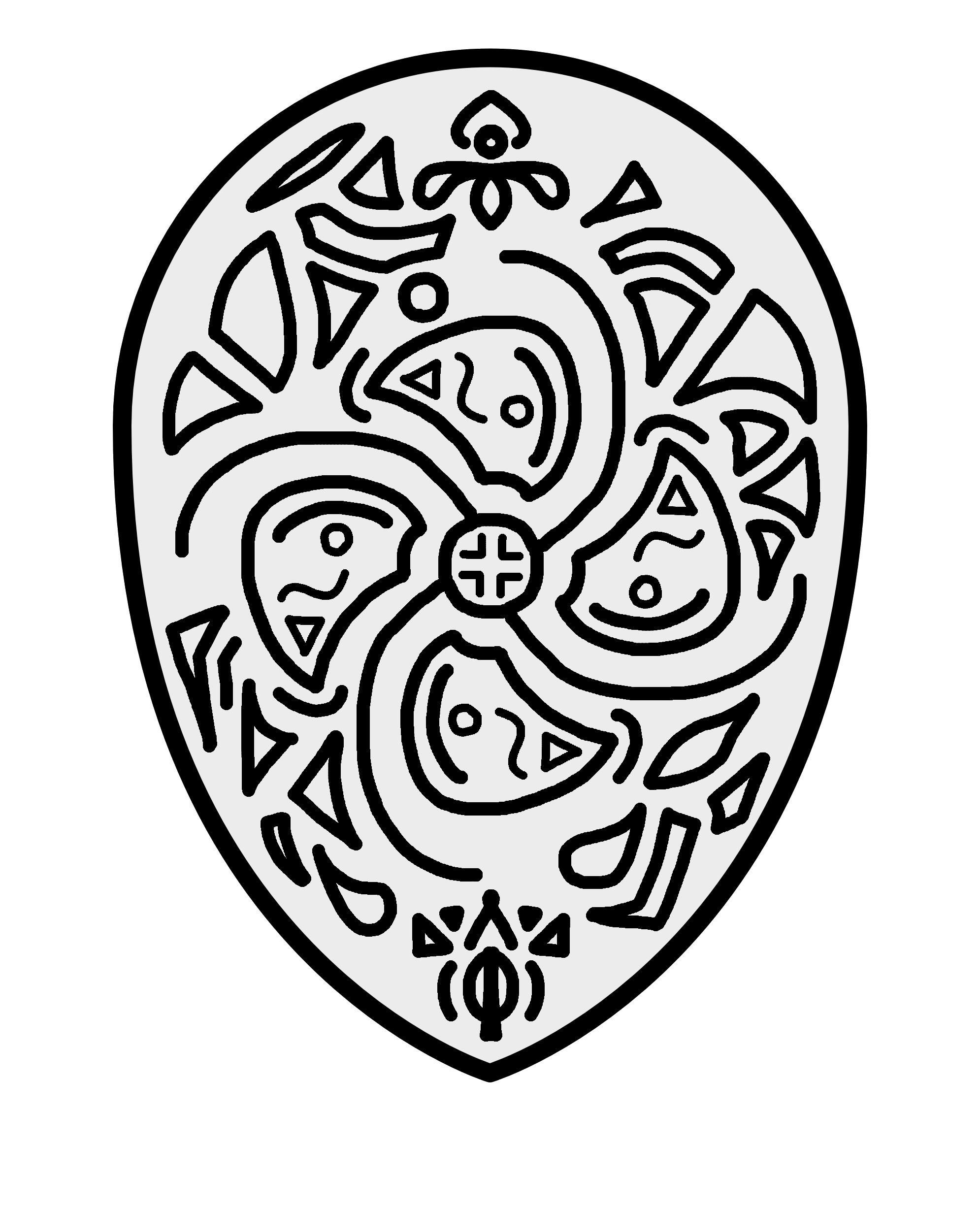Yatyanism
We had never gone to an actual temple before. The shrines that housed us along the road and the cozy church in our hometown were nothing compared to this. Incense swirled and swelled around us, tinting the winter air a soft yellow. From the fog, masked figures emerged, they came to take our furs and dress our wounds, but something just seemed off. Over all of it loomed that dark obelisk, dark and foreboding in the upper reached of the shadowy ceiling.
Tenents and Practice
Yatyanism is the prevalent religion in Ularr. While It is widely practiced throughout the world, traditions and ideas around the region vary greatly from nation to nation or even city to city. Even so, a few core concepts keep these different sub-faiths connected.Core Beliefes
As its name suggests, Yatyanism is held together by belief in Yatyan, an androgynous divine creator figure. While Yatyan is Yatyanism's most significant deity (and often the only one talked about) Yatyanist practice isn't necessarily monotheistic, many scriptures mention a plethora of other mysterious entities. Few sects actively deny the existence of such beings, but even fewer incorporate them into common practice. Alongside Yatyan, two human prophetic figures are shared over the majority of sects. Jain of Eulana and Garash of Silria, more commonly known as the Scholar and the Warrior respectively. Both of them taught a path to Vagní, a form of transcendence. The Scholar taught that by isolating oneself from all other people and studying the scripture one can find the path to a higher existence. The Warrior taught that by dying in holy battle one's spirit can achieve a perfect state. The pursuit of Vagní is often seen as archaic, but Jain and Garash remain important theological figures non the less.Yatyanist Sects
Yatyanism's three primary sects are radically different in beliefs and practices. Their origin stories are deeply entwined with Ularrian politics, leading to much animosity between them. After the death of Garash of Silria often called the last prophet which coincided with the beginning of the Grey Ages Famine, war broke out between the city of Silria and the Nangarim clans (whose descendants would become the first citizens of Nastar) This war was one of the first significant interaction of the two peoples which led to a great intermingling of their cultures. The war, which is now known as the First Great War is what shaped modern Yatyanism. Tylian Yatyanism, which had been the main faith of Silria, as well as the neighboring lands that would become Sinroshi and Sorinia in later years, fell out of favor with the Silrian government. They favored instead the teachings of Huialin, an older prophet who wrote extensively on obscure interpretations of the Hetyemily, for his radical beliefs about violence in the name of the divine. The war also spread yatyanism into Nangarim culture, mixing with their Heedian religion to create a mixed-faith practice. Today, the three main umbrellas of yatyanism have grown to include a wide variety of sub-sects. Silrian Yatyanism only become more radically fundamentalist as the years went on, Tylian Yatyanism has scattered much more than the other two sects dividing into increasingly more obscure localized religions, and Nangarim Yatyanism has started to fade away, giving way to atheist ideas.Tylian Yatyanism
In the nations of Sinroshi and Sorinia a group of religions under the umbrella of tylian yatyanism is practiced. Rooted deeply in an ancient religion that developed during the so-called "Age of Famine" in ularrian history, tylian yatyanism centers on food and eating. Throughout the year Tylians have special ritualized meals and every daily eating is a topic of spiritual importance.Silrian Yatyanism
Radically different from other sects, Slirian Yatyanism takes an absolutist interpretation of the Hetyemily as well as drawing doctrine from a secondary set of texts called the Jilinkala-ºMaronº, or the Sphinx Texts. The Sphinx Tests contribute to silrian yatyanism's most iconic feature, the masks of the priesthood. Members of the clergy wear intricately patterned ivory masks. Higher members of the clergy wear elk antlers adorned with prayer beads along with their masks. Silrian temples often also feature large obelisks that are used almost as idles.Nangarim Yatyanism
A fusion of yatyanism and the ancient practice of Heedism, with a doctrine that is mostly centered around the terrible power of nature. To Nangerim Yatyanists, Yatyan is an obscure concept. A being that is indirectly responsible for events in the world. More important is Shli, a being that's associated with Yetferara. The intention of most religious events in the ward against this deamonic entity. Prayer usually takes place outside, exposed to the elements, and includes the burning incents, believing that they ward off evil spirits. Nangarim tradition has also reflected onto greater yatyanist tradition through the Prayer of Protection, a short incantation that is said throughout Ularr for good luck.All Hail Yatyan, the creator!
Type
Religious, Organised Religion
Location








I really appreciate the illustrations in this article. I liked reading about each of the sects and how they differ, and the way you symbolized each with an item. The way that the Age of Famine defined Tylan Yatyanism feels very organic, and the visual of the masked priests with antlers is really strong.
Thank you! I hope to do a little more on this article after worldember as well!
Mapvember 2022